Thinking about Urban Lifestyles in the 21st Century | "Living in Urban Waterfronts": Prospects for the Future


Scheduled date and time: February 21, 2010 (Sunday), 13:00-16:10
Location: Tokyo International Exchange Center
Sponsor: Research Institute for High-Life
Planning and supervision: Professor Norihisa Yokouchi, College of Science and Technology, Nihon University
MC: Saori Nishihara
Project overview
Since ancient times, waterfronts have nurtured the lives of many organisms, and humans have also used waterfronts in various ways and found peace in waterfronts as civilizations developed new living environments. Shipping remains at the center of the distribution of goods, and ports play an important role, but with the development of larger ships, ports that cannot accommodate large vessels are escaping attention and large portions of land are not being used effectively. At the same time, landfill areas in regions near urban areas are spreading. And Japan is a maritime nation with one of the world’s longest coastlines (35,000 km).
For Japan, with its narrow landmass, these coastal regions can be said to be the most important spaces for considering living environments in the 21st century.
Therefore, we have organized this international symposium to think about living environments in the 21st century from a global perspective based on case studies and research from various countries around the world engaging in the development of waterfront living environments that suit modern lifestyles.
For this symposium, we asked Professor Norihisa Yokouchi of Nihon University, the leading authority on waterfront research who popularized the term “waterfront” throughout Japan, to handle general supervision, and in addition to keynote remarks from an expert invited from overseas, researchers and cultural figures from Japan will join for a frank exchange of views in a panel discussion on cases such as Ariake, which is currently under development. Furthermore, through lessons on the world’s leading case studies and comprehensive discussions, we will examine prospects for a better future.
Opening remarks:
Yasunori Nakata, Director, Research Institute for High-Life
Keynote remarks:
(1) Norihisa Yokouchi (Professor, Nihon University)
(2) Rinio Bruttomesso (Director, International Centre Cities on Water, Venice; Professor of Urban Design, Department of Urban Planning and Design, University Iuav of Venice, Italy)
Panel discussion:
Host: Tetsuya Muroyama (Executive Commentator, NHK)
(1) Professor Norihisa Yokouchi
(2) Rinio Bruttomesso
(3) Professor Hidenobu Jinnai
(4) Maako Kido (Artist)
Opening remarks
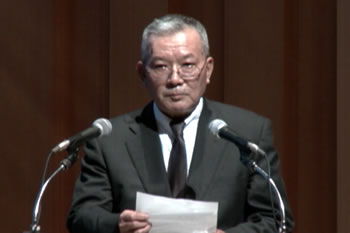
Yasunori Nakata, Director, Research Institute for High-Life
![]() Flash video | 600kbps | 3 mins.
Flash video | 600kbps | 3 mins.
Keynote remarks
Supporting new urban functions through Japan’s waterfronts: Current conditions and future prospects
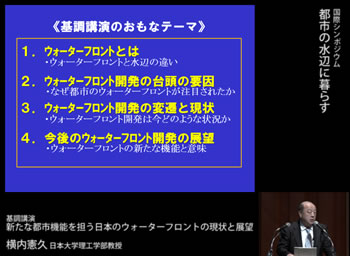
Norihisa Yokouchi
![]() Flash video | 600kbps | 25 mins.
Flash video | 600kbps | 25 mins.
Professor Yokouchi outlines the current status of development of waterfronts in Japan and ideal directions for the future.
In particular, Professor Yokouchi provides an overview regarding new urban development that takes advantage of waterfronts in Tokyo Metropolis and other major cities and explains the possibilities for such waterfronts while using case examples to discuss issues facing waterfront development. Professor Yokouchi also explains the role of waterfronts in creating compact cities to address the aging of society and environmental issues.
Keynote remarks
Redeveloping Italy’s waterfront cities
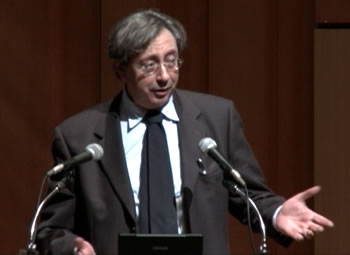
Rinio Bruttomesso
![]() Flash video | 600kbps | 25 mins.
Flash video | 600kbps | 25 mins.
Mr. Bruttomesso discusses the past and present conditions of Venice, the historical city of water, as well as urban redevelopment in Venice.
Panel discussion
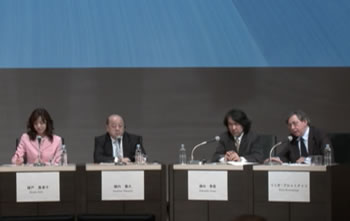
Panel discussion:
Host: Tetsuya Muroyama (Executive Commentator, NHK)
(1) Professor Norihisa Yokouchi
(2) Rinio Bruttomesso
(3) Professor Hidenobu Jinnai
(4) Maako Kido (Artist)
Based on images of actual case examples of lifestyles in waterfronts in major cities around the world, panelists provide visions for the future of living in Tokyo’s waterfronts, using conceptual drawings of the future of Ariake prepared by Professor Yokouchi and his research students as an example.
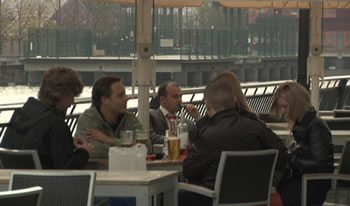
![]() Part1 Case examples: London and Barcelona
Part1 Case examples: London and Barcelona
Flash video | 600kbps | 25 mins.
![]() Part2 Case example: Singapore
Part2 Case example: Singapore
Flash video | 600kbps | 30 mins.
![]() Part3 Visions for the future of living in Tokyo’s waterfronts
Part3 Visions for the future of living in Tokyo’s waterfronts
Flash video | 600kbps | 30 mins.
![]() Part4 How waterfronts can be harnessed in our daily lives
Part4 How waterfronts can be harnessed in our daily lives
Flash video | 600kbps | 25 mins.
Panelists
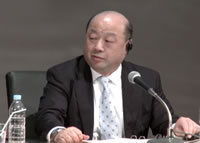
Professor Norihisa Yokouchi
College of Science and Technology, Nihon University
After obtaining a master’s degree from Nihon University Graduate School, Professor Yokouchi obtained a doctorate in engineering. His specializations include waterfront planning, landscape engineering, and environmental planning. Based on his view that waterfront planning refers to urban development focusing on “water” and should aim to integrate the vast urban spaces behind waterfronts with the spaces around waterfronts, he is engaged in studies on how to realize this vision. He is Japan’s leading authority on waterfront research.
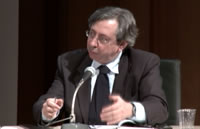
Rinio Bruttomesso
Director, International Centre Cities on Water, Venice; Professor of Urban Design, Department of Urban Planning and Design, University Iuav of Venice, Italy
Born in 1948, Mr. Bruttomesso is the Director of the International Centre Cities on Water, Venice and a Professor of Urban Design at the Department of Urban Planning and Design of the University Iuav of Venice. He is a specialist on “redeveloping Italy’s waterfront cities”, redeveloping urban waterfronts, and urban design for floating cities, and is well-versed on international case examples. He recently served as a professor at the University Iuav of Venice and now devotes his time to working as the Director of the International Centre Cities on Water, Venice. An international authority in the field of waterfronts, he produced the Cities on Water Themed Plaza at Expo Zaragoza 2008.
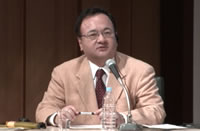
Tetsuya Muroyama
Executive Commentator at NHK (Japan Broadcasting Cooperation)
Muroyama joined NHK in Showa 51 (1976) and took a role as a producer for scientific programs such as "Ultra Eye", "Close-up Gendai" and "NHK Special" before working as a leading commentator for NHK. He provides comments mainly on issues ranging from science and technology, life and neuroscience, the environment, and space engineering, and has been committed to science education in his capacity as headmaster for a science program for children, "Kagaku Daisuki Doyo Jyuku" (Educational TV). Muroyama has received a number of awards, including the Monte-Carlo Television Festival Golden Lion, the Silver Lion, and the Rainier III awards, the Hoso Bunka Foundation Award, the Shanghai International Film Festival Filming Award, the Science and Technology Film/Video Festival Science and Technology Agency Director-General Award, and the Sugako Hashida Award. He is a board member of the Japanese Association of Science & Technology Journalists, the Planetary Society of Japan, and the Young Astronauts Club.
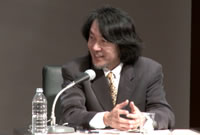
Professor Hidenobu Jinnai
Faculty of Engineering, Hosei University
Born in 1947 in Fukuoka prefecture, Professor Jinnai studied abroad at University Iuav of Venice from 1973 to 1975 with a scholarship from the Italian government, and in the following year, he studied at UNESCO’s International Centre for the Study of the Preservation and Restoration of Cultural Property (ICCROM). After returning to Japan, he obtained a doctorate from the School of Engineering of the University of Tokyo in 1983. Subsequently, after serving as an assistant at the Faculty of Engineering at the University of Tokyo and as assistant professor of architecture at the Faculty of Engineering at Hosei University, he is now a professor of architecture at the Faculty of Engineering at Hosei University.
He is engaged in urban studies and surveys in the Mediterranean world, particularly Italy. He also won the Suntory Prize for Social Sciences and Humanities for his book “Tokyo: A Spatial Anthropology”, in which, based on comparisons with Venice, he argued that Edo (present-day Tokyo) was a city of water. His commentaries are frequently published in magazines related to the arts and architecture, and he also appeared in NHK Ningen Koza’s “Lifestyles in Mediterranean Cities” (June-July 2001) as a lecturer. In 2003, he was awarded a prize of the Architectural Institute of Japan (Research Theses Division).
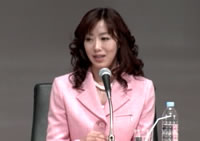
Maako Kido
Ms. Kido graduated from the Department of Painting of Musashino Art University in 1987. In 1998, she competed in the VOCA exhibition. She has also created many works of public art, including a giant mural for a coffee shop in Kanbocho and a mural for the Tokyo Bay Aqua-Line’s Umihotaru island.
She is President of the Gakken Kido Maako Art School. She is also engaged in a wide variety of activities, such as serving as a consultant for Central Japan International Airport Co., Ltd. and as a member of the advisory board of the Central Nippon Expressway Company.
She has released a book, “Honwaka kaigo - watashi kara haha he arigatou enikki (Warm Nursing Care: A Picture Diary of Gratitude for my Mother)”, from Shueisha Inc.